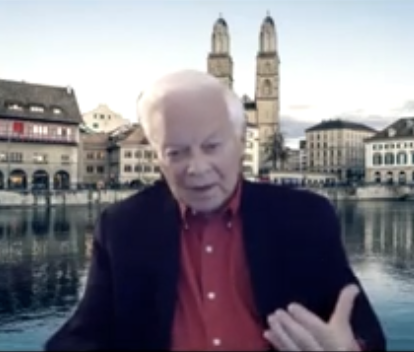 You can tell a lot about people by observing their thumbs. Fortunately we aren’t all built the same. It takes all types to make the world.
You can tell a lot about people by observing their thumbs. Fortunately we aren’t all built the same. It takes all types to make the world.
Look around you and see if you can spot obvious differences.
Thumbs are thought to represent one’s conscious will. Our capacity and willingness to change the world around us, manage our circumstances or get things done. They are also thought to reveal how we do this: with enthusiasm and boldness or with steadfast perserverence.
As you start noticing people’s thumbs, you’ll see many differences.
Let’s start with your own thumbs. What do you notice first about them?
Are your thumbs curvy or straight?
 Some thumbs are straight as an arrow, others are curved like an arc.
Some thumbs are straight as an arrow, others are curved like an arc.
Straight thumbed people are thought to be more logical. They like to follow a sequence towards clear goals or defined outcomes.
Curvy thumbed types are thought to allow their feelings rule over logic. They do things because it feels right and they bring lots of enthusiasm and perhaps even boldness to the task. (1)
Neither type is better nor worse. They have very different ways of getting things done.
Let’s look at the thumbs of a few people and note how similar or different their thumbs are and what this means.
Curvy thumbs
Dr Sylvia Earle is an intrepid marine scientist whom I admire deeply. For the last +70 years she has devoted her life to exploring and preserving the ocean depths. Notice the curvature of her thumbs! She’s perfectly built for inspiring the rest of us with her enthusiasm, deep passion and commitment to protecting fragile marine life.

“With knowing comes caring. With caring comes hope.” – Dr Sylvia Earle
Watch her films on why the next few years matter more than the next 10 000.
“We need to protect the ocean as if our lives depend on it – because they do!”
says Sylvia Earle
Curvy versus flexible
People often mix up curvature of the thumb with flexibility. Actually these are two separate variables!
For example, Sylvia Earle sure has curvy thumbs but if you could check the flexibility of her thumb joints you would find that they are actually very firm. Dr Earle is certainly no push over. She’s unshakeable and totally driven by her passion for saving the ocean. And thank goodness for that!
You can test the flexibility of your own thumb joints, by holding them between your thumb and index finger and pressing gently on the joint to see if they are firm or more pliable. Firm thumb joints are like oak trees. They survive by standing firm. Thumb joints that are softer are more like willow trees. They survive life’s storms by being more flexible and going with the flow.
Straight thumbs
Let’s compare Sylvia Earle’s thumbs to those of Professor James Hollis below. Prof Hollis is a Jungian psychologist, university lecturer and author of seventeen books.

Notice how straight Prof Hollis’s thumbs are compared to Dr Earle’s. Apparently logic and reason govern his decisions more than emotion, even though his work is in a more introspective field, studying the inner tides of the human psyche rather than planetary or oceanic tides.
Straight thumbed types are associated with following a sequence with steadfast perseverance. That could certainly account for the constancy of his authorship, a sequence of excellent publications, published year in, year out.
Which type are you? Do you resonate with the qualites associated with your type?
Thumb Angle
The next thing to observe about your own thumbs is the space between your thumb and index finger. Do you hold your thumb out at a wide angle to the rest of your hand or do you hold them close in? This is called your thumb’s “angle of opposition”. Your ability to oppose.
Both Hollis and Earle have wide thumb angles. People with wide thumb angles are thought to show maximum initiative. They are considered industrious and willing to shoulder a lot of responsibility. This is certainly true for Sylvia Earle. Decades ago she founded a pioneering company to design and build small submarines so that she and other marine scientists could find out more about deep sea environments. Now in her eighties she is still passionately engaged, as president of Mission Blue, a foundation for ocean conservation.
Prof Hollis is also an initiator and incredibly industrous. Just look at his thumb angle! No wonder he’s written 17 books to help us find our way in the world. (Topics such as finding meaning in the second half of life, the wounding and healing of men, understanding our darker selves, resilience in times of change, surviving tragic loss and a lot more.)
Not everyone is built to be an initiator, or CEO who enjoys shouldering maximum responsibility. People with smaller thumb angles are thought to make good team players. Collaboration is crucial. Complex societies depend on co-operation.
Thumb angles are certainly not fixed. They can vary over the years and even moment to moment, as your mood or determination or perceived need for caution changes.
The angle you hold your thumbs is one thing that you can consciously change over time.
For part 2 of this article, on how to improve your thumb’s power, read my next post Are your thumbs parked? for the most important thing you need to know about your thumbs and how to do thumb rehabilitation using breathwork and other techniques.
Photo credits
thumb images by Luke Peterson, Brayan Espitia and Fethi Bouhaouchine
Reference Notes
- p. 571 Hand Analysis 101 by Richard Unger, 2022
Resources
How can your hands help you?
Hands reveal your depth and beauty and also where you might be getting in your own way. See what you need to see to unlock your right life. For online consultations, book here.
Hand analysis training:
Learn how to analyse hands next courses are here
More articles about hands register for more hands tips here.
